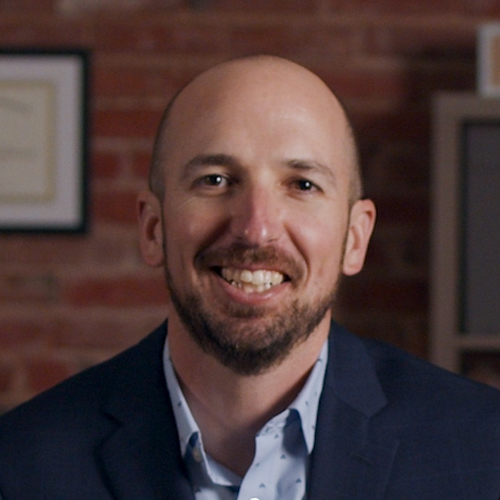Don’t Let This Dead Investing Theory Cost You Money
Andy Snyder|February 5, 2021

An old friend is dead.
The obituary tells the tale. From humble beginnings in 1952… to massive stardom on Wall Street in the ’70s, ’80s and ’90s… to a quiet, lonesome death on January 27.
This death has important implications for your money and how you invest it.
We must admit, we were glad to see the news.
The time had come.
We’ve introduced you to the victim – modern portfolio theory – several times.
He was a grand ol’ fella with good intentions and an idea worth following.
The deceased Nobel Prize-winning theory, if you’re unfamiliar, told us to adjust our asset holdings based on their correlations to one another and their effect on overall portfolio risk.
Seventy years ago, when the idea was born, the math added up.
It made sense.
There was no quantitative easing… no bank bailouts… no mailbox money free-for-alls… and no darned millennials on the internet gumming things up.
The theory gave the Wall Street crowd something to rally on. It gave brokers and advisors some “science” to share with their clients.
We even used it ourself.
Wall Street vs. the Garden of Eden
As long as folks were convinced that up is always up and down is always down… the theory would hold. As long as an “efficient” market always righted the upside-down… modern portfolio theory was as scientifically solid as Newton’s musings on gravity.
But then along came the internet… that lousy rabble-rouser.
We’ve researched and written about the effects of the web on investing for quite a while. Its speed should make for ultra-efficient markets. Its reach should rope in information from all around the globe.
It does… sometimes.
But with the good comes the bad (Isn’t that right, Mrs. Manward?). It’s the internet’s original sin… the forbidden apple of lousy ideas and even worse information.
Few mortals have the faith it takes to avoid taking a bite.
And so on January 27, we all paid the price. That’s the day a band of hooligans got together in an online forum and organized a plot to put a knife to the throat of the feeble, old theory.
As they bid up the shares of nearly defunct brick-and-mortar video retailer GameStop (GME), they slid the knife across the jugular. With each dollar the stock moved higher, the knife slid further and further across the throat.
As the mob moved from one stock to the next, the famed modern portfolio theory was dead and lying on the trading room floor. The heart of the idea – efficient markets – had bled out.
The Silver Dagger
But it’s not just this headline-grabbing mob.
Oh no… it’s Elon Musk. A single tweet will send the oddball crypto Dogecoin soaring.
And it’s not just the high-flying crypto market either. Far from it.
The idea behind the late modern portfolio theory tells us that precious metals buoy our portfolios in turbulent times like these.
Ha.
The silver market got slapped around by the mob too.
The $1.5 trillion market saw its price surge by more than 15% as reporter after reporter found joy in amplifying the half-baked squeeze.
The reporting and the ignorance behind it all got so bad that we wouldn’t be surprised if there were lines outside the local fried seafood shack after the headline-chasing crowd heard “Long Silver.”
Surely the news has been a boon for Long John Silver’s.
It’s all pretty silly… and, in many cases, downright stupid.
But it does have serious consequences.
Investing Must Change
Folks still managing their money the old way don’t realize the theory behind their logic has died. The mob sharpened its knife while Elon Musk dug the grave.
Does it mean that the markets are unsafe… that the naysayers were right all along – the whole thing is a rigged casino?
Far from it.
We’ve been buying more shares than ever… and the market is kindly rewarding anybody who does.
What it means is we must invest differently.
The idea that bonds rise in value when stocks sink is no longer true. Not with Jay Powell waving his checkbook around.
The idea that growth pays when value doesn’t is now as quaint a theme as the rotary phone. The roving mob has made sure of it.
And the idea that up is up and down is down… has been killed by Twitter and the mouth breathers behind it.
In the generations since modern portfolio theory was born, many new asset classes have come to life.
Options, for example, were not available to the masses until the 1970s.
Exchange-traded funds have been popular for only the last 20 years or so.
And crypto? The forces, ideas and technology behind it were unthinkable during even the Clinton administration, let alone during the Truman era.
Their effect on the market begs us to invest differently.
It’s why we penned our Modern Asset Portfolio theory and made it the core of our Manward Letter. It takes the sound logic of yesteryear and tosses it into the blender with today’s modern assets and government heavy-handedness.
The result is a nimble and highly effective investment strategy that allows us to take advantage of the day’s most powerful forces. With it, we don’t have to bet on where the mob will head next… or what Musk will tweet tomorrow.
No… by tracking interest rates – the hormones of the economy – we can adjust our strategy as the most powerful force in the money world rises and falls.
We’ve got just a handful of categories. All are based on real interest rates (specifically the 10-year Treasury minus the rate of inflation).
Right now (and likely for the next two years), we are in the “negative rate” category – with a real rate of -1.04.
That means free money rules the day.
Buyback stocks are hot. Tech stocks and their balance sheets filled with intangibles will continue to drive big profits. So will the assets that catch all that free money… the so-called mob assets, like crypto and SPACs.
The investing canon recognizes none of this.
That’s too bad. It is costing folks a lot of money.
We pray they don’t learn about the death of their old friend when it’s too late.
The family could use some help paying funeral expenses.

Andy Snyder
Andy Snyder is an American author, investor and serial entrepreneur. He cut his teeth at an esteemed financial firm with nearly $100 billion in assets under management. Andy and his ideas have been featured on Fox News, on countless radio stations, and in numerous print and online outlets. He’s been a keynote speaker and panelist at events all over the world, from four-star ballrooms to Capitol hearing rooms.



